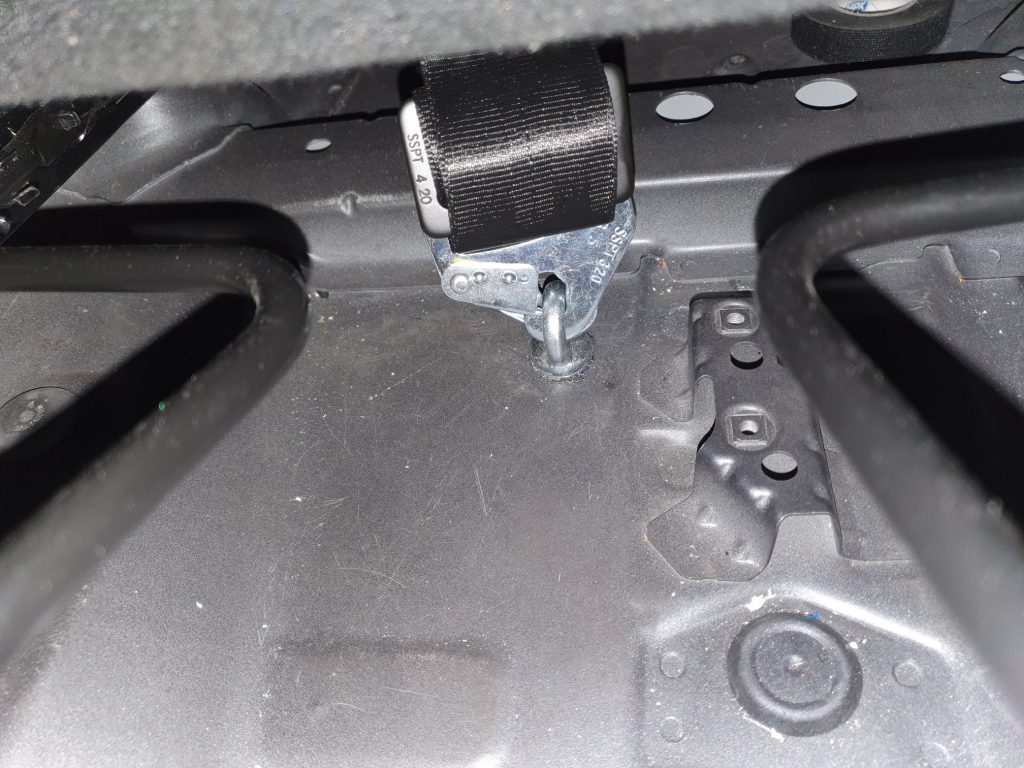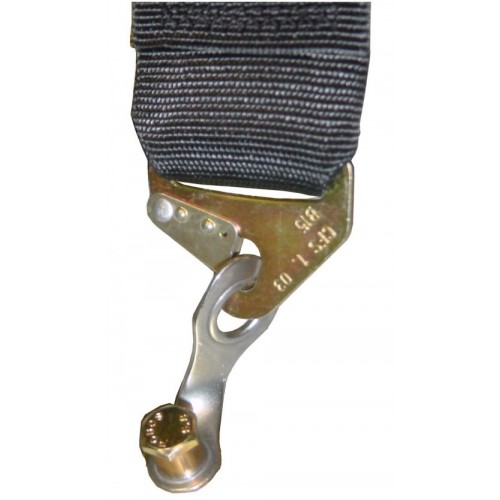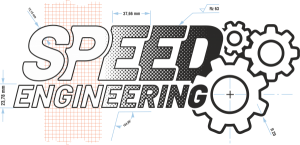3-, 4- and 6-point belts and their attachment explained simply.
It is important that you form a unit with the seat shell, which at best should not be separated.
SPEED Engineering GmbH
Even the best seats and seat consoles are useless if you slide back and forth like on a church pew when cornering or braking. Of course, this happens much less with classic racing seats than with standard seats, but in the long term you can’t do without proper harnesses either.
It is important that you form a unit with the seat shell, which at best should not be separated. You need arm and leg room to steer, while your body remains firmly in position in the seat. At any time.
This immediately clarifies that the standard 3-point harnesses, which give the upper body a massive amount of room to move, are 99% unsuitable for the racetrack. If you brake hard, the worst that can happen is that you slide forward before you are “caught” by the belt tensioner and fall back into the seat. The result is a body tension that you consciously display in order to defy the G-forces. The ride is like a nervous strain and you can’t concentrate much on the route.
Rigid 3-point sports belts provide a remedy here. These are usually bolted to the original fastening points of the standard seat belts and to a point on the rear seat and allow your upper body less play.
For advanced use on the racetrack, however, we recommend at least rigid 4-point harnesses. The advantage of this is the independent shoulder straps, which are brought together in the 3-point harness. This results in an even better seat for the rider and a more even load. In our store you will only find 4-point harnesses from Schroth. Why is that? – These belts are type-approved in accordance with ECE-R standard 16.04 and are therefore registration-free! In addition, the 75 mm wide shoulder straps offer optimum support and comfort at the same time. Example: A 50mm belt can be very restrictive on the shoulders of broad-built people. The best feature, which also leads us directly to the 6-point harness, is the option of upgrading the Schroth 4-point harness to a 6-point harness. The harness buckle offers space for a double crotch strap, which also prevents you from slipping under the lap belt. This makes this harness the only 6-point harness with pressure lock and ECE approval and perfect for use on the track if your track tool still has road approval.
Pressure lock? – Another word… All the sports and racing harnesses presented so far, as well as the standard harness in your vehicle, naturally have a buckle. Since the pressure mechanism became established a long time ago in road-approved cars and the handling of such a mechanism in the event of an accident is generally known, only belts with pressure buckles are ECE-approved. Sports and racing harnesses that are equipped with a twist lock have FIA approval at most, can hardly be registered even via individual approval and in the rarest case bring you closer to road approval. When used purely on the track, these are of course also suitable.
How do I attach the straps? – The attachment of all the belts mentioned above depends on your vehicle and any specifications of your TÜV inspector. There are various options here:
Attachment to eyelets and counter plates:
This requires belts with latching fittings that can be latched into the eyelet. The eyelet itself is attached to your vehicle with counter plates. In this case, be sure to discuss with the TÜV inspector where the attachment makes sense.

Source:Trackday-Forum, https://www.trackdayforum.com/uploads/monthly_2021_09/Gurt.jpg.a81c0464a5c61d338bbde241bb598645.jpg
Mounting on standard fixtures:
If possible, the use of standard fixing points is welcome by the TÜV. Because these are guaranteed to be sufficiently resilient when it comes to fastening seat belts.
Here you also have the choice between belts with ratchet fittings, which you can attach to the vehicle with the Schroth B23 kit, or belts that have screw-on fittings that are screwed directly to the given attachment points.
The advantage of installing belts with latch fittings via the B23 kit is that the B23 kit is designed to be bent into position. This means that you don’t have to adjust the fittings of the harness itself compared to harnesses with screw fittings.
There are adapters for standard seat belts that allow you to continue using the rear seat bench in a Clubsport conversion and hook in 3- and 4-point belts if required. Of course, only if there are no people sitting in the back. A system like this was also used in the M5 Ringtaxi, for example.

Source: https://www.schroth.de/media/catalog/product/cache/1/image/500x/9df78eab33525d08d6e5fb8d27136e95/b/2/b23kit.jpg
Mounting on seat consoles/L-adapters:
Some of our L adapters have suitable holes for attaching straps. We have deliberately integrated this into the L-adapter, as this eliminates the annoying adjustment of the lap belt length when adjusting the seat. Our L-adapters also have the necessary strength for this type of installation.
Important note: Many manufacturers include mounting material with their belts. When attaching belts with screw fittings, we recommend reusing the original screws from the attachment point instead of the mounting material. – Despite the convention that a 7/16″ UNF thread should be used for restraint devices, we have repeatedly seen differences between manufacturers! You should also ensure that an M12 screw is not inadvertently inserted here. This can sometimes be screwed in several threads, but is definitely not suitable as a replacement for a suitable 7/16″ UNF screw!


